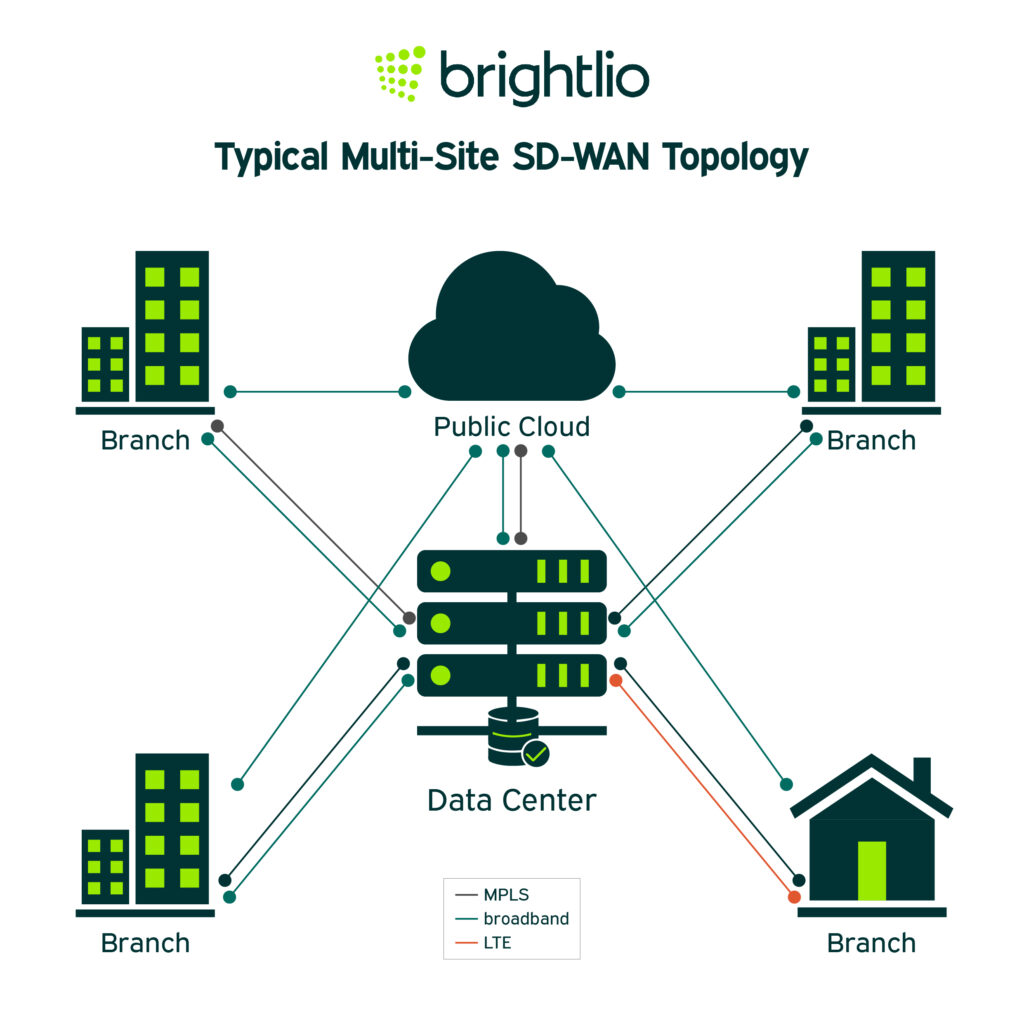
Table of Contents
Unleashing the Power of SD-WAN: A Deep Dive Into SD-WAN ROI
SD-WAN adoption is increasing rapidly. Cost savings over traditional WAN deployment models are driving a desirable SD-WAN ROI. Compared to other WAN options, how does SD-WAN save money?
In this blog post, we will delve into the ROI and business benefits of SD-WAN. We will draw on specific statistics and references to demonstrate how SD-WAN outshines traditional WAN deployment models.
What is SD-WAN?
SD-WAN stands for Software-Defined Wide Area Network. SD-WAN is a virtual WAN architecture that abstracts the network layer, enabling businesses to access various connectivity options. These include traditional enterprise WAN services like MPLS and dark fiber and lower-cost alternatives like broadband, LTE, and 5G.
P&S Statistics predicts that the SD-WAN market will grow at a 31.2-percent rate between 2022 and 2030.
What are the Benefits of SD-WAN?
SD-WAN has numerous benefits that drive down costs and produce a positive ROI. Let’s explore them in detail.
Cost Savings and Efficiency
Legacy WAN costs have averaged 10% of a typical enterprise IT budget. SD-WAN offers a more cost-effective alternative to traditional WAN architectures. Companies can get performance, reliability, and security provided by MPLS while using lower costs broadband services. A Telegeography study found that redundant broadband connections save 84% off a comparable MPLS network.
Furthermore, the streamlined management and automation capabilities of SD-WAN enable IT teams to deploy new sites and make configuration changes more quickly and efficiently. IDC states that businesses can reduce IT staff’s time managing WANs by over 32% using SD-WAN. Additionally, customers that adopt SD-WAN could onboard services 59% faster.
Improved Network Performance and Reliability
One of the primary advantages of SD-WAN is its ability to route traffic intelligently based on application requirements, available bandwidth, and network conditions. Telegeography found a 236% capacity increase by using SD-WAN over MPLS. This is achieved through application-aware routing, which enables the network to make real-time decisions on the best path for each application, ultimately leading to reduced latency, increased throughput, and improved overall user experience.
Moreover, SD-WAN’s ability to leverage multiple transport links, such as MPLS, broadband, and LTE/5G, contributes to increased network resiliency. IDC found that organizations deploying SD-WAN experienced a remarkable 94% reduction in network downtime. This level of reliability is paramount for businesses that rely heavily on mission-critical applications and cannot afford the costs associated with network outages.
Enhanced Security
SD-WAN offers built-in security features that help organizations protect their network and data from cyber threats. A survey conducted by Barracuda Networks found that 92% of respondents identified improved security as a top benefit of adopting SD-WAN.
Key security features include end-to-end encryption, next-generation firewall capabilities, secure web gateways, and intrusion prevention/protection, all of which can be centrally managed and monitored through a single pane of glass. By integrating these security features, SD-WAN simplifies the process of securing WAN infrastructure, reducing the likelihood of cyber-attacks and data breaches. It also lowers the number of devices that much be purchased to deliver WAN and security services.
Cloud-Readiness
As businesses increasingly adopt cloud-based applications and services, traditional WAN architectures struggle to meet the demand for secure, high-performance connectivity. This is because many traditional WAN networks require traffic to be routed through a central data center.
SD-WAN, on the other hand, is designed to support the modern, cloud-centric enterprise. According to Gartner, by 2023, more than 90% of WAN edge infrastructure refresh initiatives will be based on SD-WAN appliances and virtualized customer premises equipment (vCPE) platforms versus traditional routers. SD-WAN’s ability to optimize traffic routing for cloud-based applications and its support for direct internet access ensures that users have a seamless and efficient experience when accessing cloud services.

In addition, SD-WAN’s centralized management console allows IT administrators to easily monitor and manage the connectivity between on-premises and cloud-based environments. This level of visibility and control is critical for organizations that must maintain a consistent network performance and security posture across all their locations and cloud services.
Easy Incorporation with UCaaS
Because SD-WAN can prioritize applications with a tendency to have high latency, it works well with Unified Communications (UCaaS) solutions. It also supports better call monitoring for troubleshooting possible issues in the system.
Remote work and globalization have increased the importance of cloud-based communication. Check out our “SD-WAN and UCaaS: Better Together” article to learn more about how SD-WAN can help optimize unified communications.
Calculating SD-WAN ROI
When evaluating the ROI of SD-WAN, it is essential to consider both the direct cost savings (e.g., reduced connectivity costs) and the indirect benefits, such as improved network performance, enhanced security, and increased operational efficiency. To estimate the ROI, businesses should examine the following factors:
- Network connectivity costs: Compare the costs of existing MPLS circuits with the potential savings achieved by leveraging SD-WAN and lower-cost broadband links.
- Operational expenses: Assess the potential reductions in hardware, maintenance, and support costs associated with deploying SD-WAN versus traditional WAN infrastructure.
- Productivity gains: Estimate the value of improved network performance and reduced downtime on employee productivity and customer satisfaction.
- Deployment costs: Quantify the potential benefits of faster site deployment and network configuration changes enabled by SD-WAN’s streamlined management and automation capabilities.
- Security benefits: Consider the cost savings associated with avoiding data breaches and cyber attacks due to the enhanced security features of SD-WAN.
Conclusion
The ROI of SD-WAN is compelling. It offers organizations a more agile, cost-effective, and high-performance solution than traditional WAN architectures. With its intelligent routing capabilities, centralized management, and support for diverse transport technologies, SD-WAN is well-positioned to address the demands of modern, cloud-based applications and services.
By carefully evaluating the potential cost savings and indirect benefits, businesses can make informed decisions about adopting SD-WAN and transforming their wide area networks.
Get the Best Out of SD-WAN with Brightlio
The cost-saving benefits of SD-WAN are meaningful, but navigating the market can be challenging. Deciphering your company’s network needs is one step, and finding a plan and vendor that answers them is another. All of this can be made more accessible through the help of an expert.
Brightlio brings the expertise you need to make informed technology decisions. With over two decades in telecommunications and a global network of technology partners, we can find an SD-WAN solution optimized for your needs and budget.
We also offer unified communications, data center, cloud, and advisory services. We are committed to being your most trusted and responsive IT solutions provider.
Contact us today to get started!
If you enjoyed this article, you may also like “The Pros and Cons of SD-WAN“.
Recent Posts
Vancouver Data Centers: Colocation in the Pacific Northwest
Business Broadband Solutions: The Ultimate Guide
Let's start
a new project together



